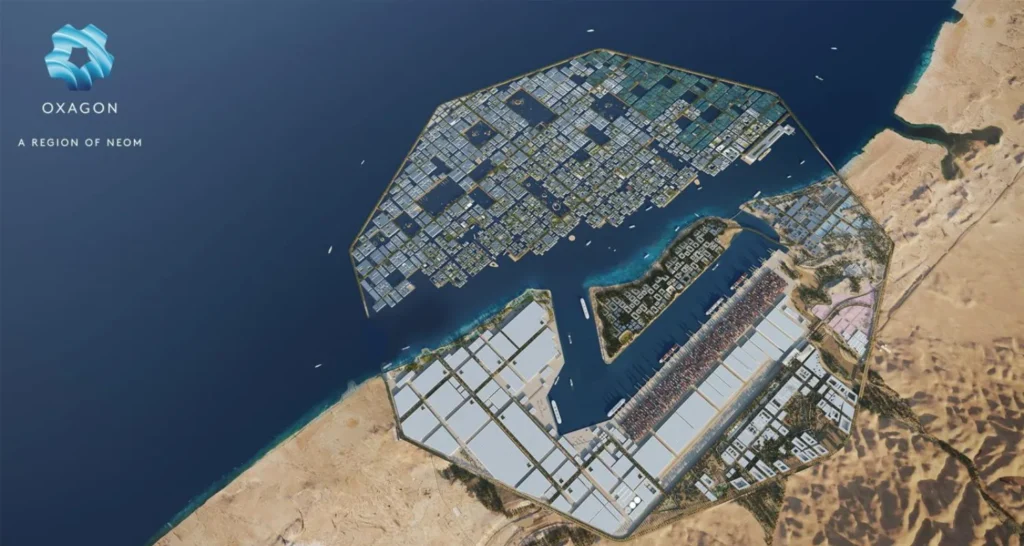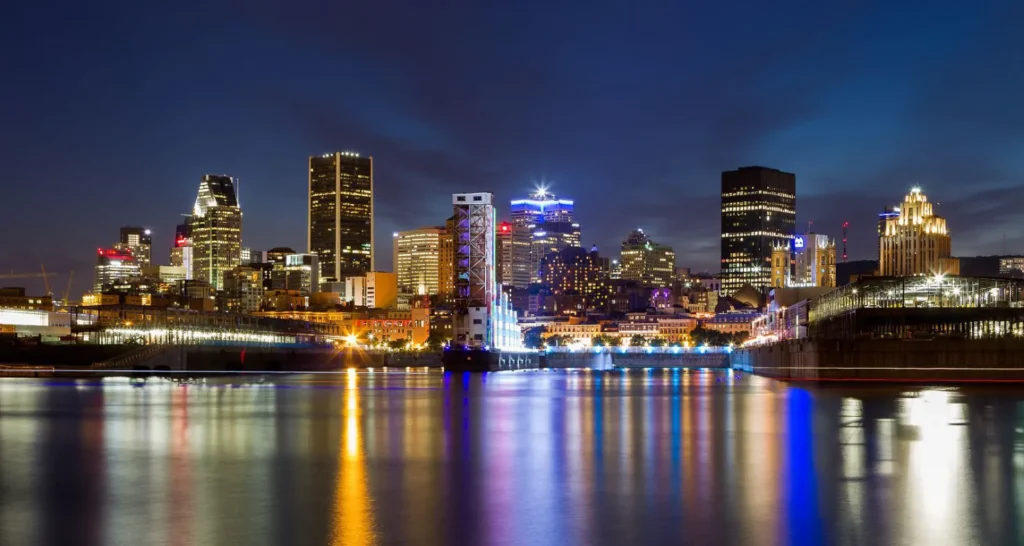The role of smart physical infrastructure in a smart city’s development is crucial. The physical structure provides the very foundation upon which the smart city is developed. Without it, you would not have a smart city. The Earth is facing a number of environmental challenges, as you know. Smart physical infrastructure is vital not only to the single smart city but to every city on Earth. The intelligent use of technology through major information technology companies (IT) has provided the pathway for a sustainable planet and a sustainable city through smart technology. The integration of physical infrastructures is building a better planet on which to live for all people. The resistance of the smart city to environmental shocks has received a much-needed booster shot through integration with smart technology.
Smart Physical Infrastructure in a Smart City's Development
Smart technology creates opportunities. Overall development integration with smart solutions helps to aid the development of smart cities in a soaring way. The efficiency of all sectors of the physical infrastructure shows their faces in many ways, too numerous to mention in this small space. The economic potentials reach an all-time high while taking into consideration our environment at the same time. Costs reduction and new businesses and services in the developing city. Vertical and horizontal integration is a major source of perfection for the developing city. Vertical integration works mainly with existing physical infrastructure. Innovations and cutting-edge technology are bringing us the best of both worlds in all sectors of the physical infrastructure necessary for smart city life.
The successful development of a smart city requires the integration of bottom-up systems and top-down service development. Technology integration with vertical integration joins together the use of advanced technologies in many areas for smart physical infrastructure. Some of these leading technology services include:
- Sensors
- Low-Cost Communication
- Real-Time Analysis and Control
- Horizontal Integration of Isolated Pre-Existing Services
The integration of vertical and horizontal creates the “System of Systems” when it comes to developing smart physical infrastructures. In the focus of developing the physical infrastructure in smart cities, a look is taken at how to work with pre-existing infrastructures such as utility management and energy efficiency. Ways are determined to provide solutions in a technical manner for such problems as water leakage and flow. After introducing vertical integration, it comes to horizontal integration. The whole developing smart city’s physical infrastructure is taken into consideration. Data through smart technology are combined with the ultimate management of all systems. All systems in the smart physical infrastructure are related and connected in the smart city.

Smart City Development
Chronic urban challenges are met in the development of the smart city. The main consideration is to take a sound and efficient physical infrastructure. This challenge has been met with the technology given to us through IT companies through the development of smart technology procedures and applications. Smart physical infrastructure is required for the smart city. Sustainable urban development requires smart infrastructure.
Smart development technology approaches any challenges which present themselves in development. Integrating buildings, necessary basic needs, building infrastructure, and services with real-time information technology build the smart communities of today.
The challenges of sustainable urban development have been met through the strong base of smart physical infrastructure.
This is done by applying smart principles. Mixed methods of data collection and analysis open the door to smart necessities in the base such as water system management, energy, and utility grids, transportation, and all services that a smart city resident requires to be secure and happy. The objectives of the data access the physical infrastructure, building uses in relation to smart principles, and smart applications for top-notch management of all sectors. The development of a smart city has become a reality.
Through the smart physical infrastructure, many avenues develop in the smart city. Further development is progressed right into the homes. The integration of energy, utilities, and telecommunications connects the home right to the physical infrastructure through the citizens and smart devices. Smart city development is a global phenomenon.

Smart City Development All Over the Earth
As caring for the environment becomes a concern for global citizens, smart cities are developing all over the Earth. They are all connected. Global smart city development covers the aspects of the physical infrastructure for the betterment of the planet. Smart energy, smart buildings, smart water, smart transportation, and other sectors have become a way of life. Investments are pouring towards the areas of open data platforms and smart grids. So many sectors, and branches thereof, are making an appearance in government and service applications. Energy-efficient buildings are popping up everywhere. The role of smart physical infrastructure in smart city development is crucial in heading towards a sustainable planet.
The Role of Physical Infrastructure in the Development of Smart Cities
As technology continues to advance, cities around the world are transforming into smart cities, utilizing cutting-edge technologies to improve the quality of life for their citizens. One crucial aspect of this transformation is the role of physical infrastructure, which serves as the backbone for the development and success of smart city projects.
One of the key concepts driving the development of smart cities is the use of specific measurable goals, often referred to as SMART goals. These goals are Specific, Measurable, Achievable, Relevant, and Time-bound, and they provide a clear framework for smart city initiatives to achieve their objectives effectively. Physical infrastructure plays a crucial role in setting SMART goals and achieving them in a time-bound manner.
One of the significant technological advancements that have enabled the development of smart cities is the Internet of Things (IoT). IoT refers to the interconnection of everyday objects to the internet, allowing them to collect and share data in real-time. This connectivity can be leveraged to enhance the performance of physical infrastructure in smart cities.
Transportation systems are a critical component of any urban environment, and they play a vital role in improving the quality of life for citizens. In smart cities, transportation systems are often connected to IoT networks, allowing for real-time data collection and analysis. This data can be used to optimize traffic flow, reduce congestion, and enhance public transportation systems, leading to more efficient and sustainable transportation options for citizens.
Physical infrastructure in smart cities can also support the achievement of fitness goals. For instance, smart parks and recreational facilities equipped with IoT-enabled devices can provide real-time data on air quality, weather conditions, and crowd levels. This information can help citizens make informed decisions about their outdoor activities, such as jogging or cycling, leading to a healthier and more active lifestyle.
Setting smart goals for physical infrastructure in smart cities also involves local governance. Local governments play a crucial role in the planning, development, and maintenance of physical infrastructure. They need to set goals that are aligned with the overall vision of the smart city and ensure that the necessary resources are allocated to achieve those goals in a time-bound manner. This can involve the implementation of policies and regulations that support the deployment of smart technologies in physical infrastructure, such as smart grids for energy management, smart water systems for efficient water usage, and smart waste management systems for improved sustainability.
In the United States, several cities have already embarked on smart city initiatives and are leveraging physical infrastructure to achieve their SMART goals. For example, New York City has implemented smart technologies in its transportation systems, such as smart traffic lights that use real-time data to optimize traffic flow and reduce congestion. San Diego has deployed smart streetlights that are equipped with sensors to collect data on temperature, humidity, and air quality, which can be used to enhance the city’s sustainability efforts.
Smart goals set for physical infrastructure in smart cities also aim to improve public services. For instance, the use of real-time data from IoT-enabled devices can help local governments monitor and manage public utilities, such as water and energy usage, more efficiently. This data can be analyzed to identify patterns and trends, leading to data-driven decision-making and improved service delivery to citizens.
In conclusion, physical infrastructure plays a crucial role in the development of smart cities. Through the use of specific measurable goals, IoT-enabled technologies, and real-time data, physical infrastructure can support the achievement of smart goals set by local governance. From improving transportation systems to enhancing the quality of public services, physical infrastructure serves as the foundation for smart city projects. As cities continue to embrace smart technologies, the role of physical infrastructure will continue to be a key factor in driving the success of smart city initiatives and improving the quality of life for citizens.













